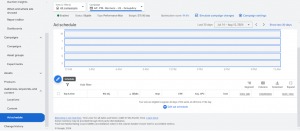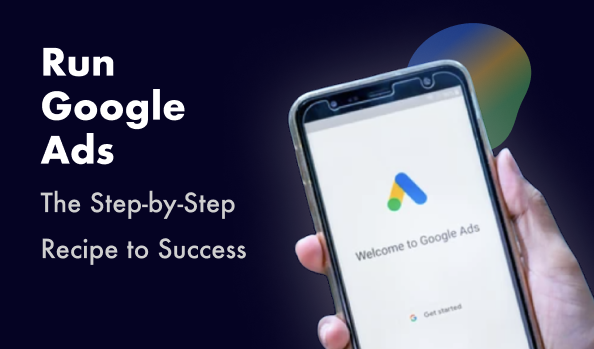Google Ads is a powerful tool for driving traffic and conversions, but without careful management, costs can quickly spiral out of control. Whether you’re a seasoned advertiser or just starting, understanding how to save money in Google Ads is crucial for maximizing your return on investment (ROI). This blog post outlines seven effective strategies to reduce Google Ads costs while maintaining, or even improving, campaign performance.
Optimize Keyword Selection
Choosing the Right Keywords:
Selecting the right keywords is the foundation of a cost-effective Google Ads campaign. Focusing on high-intent, long-tail keywords is essential. These keywords are more specific and typically have lower competition, meaning they cost less per click. Use tools like Google Keyword Planner and SEMrush to find keywords that balance search volume and competition. Additionally, avoid broad match keywords, as they often trigger ads for irrelevant searches, leading to wasted ad spend. Also you can trust keyword research to automated adwords software, like Optimyzee, which will generate relevant keywords for you.
Negative Keywords:
Implementing negative keywords is another powerful strategy to save money in Google Ads. By identifying and excluding keywords that are irrelevant to your business, you can prevent your ads from being shown to the wrong audience. For example, if you sell premium products, you might want to exclude keywords like “cheap” or “free.”
Improve Quality Score
Understanding Quality Score:
Google’s Quality Score is a metric that assesses the relevance and quality of your ads, keywords, and landing pages. A higher Quality Score leads to better ad placements and lower cost-per-click (CPC). Improving your Quality Score can significantly reduce your overall Google Ads costs.
How to Improve Quality Score:
– Keyword Relevance: Ensure your keywords are closely related to the content of your ads and landing pages.
– Ad Copy: Write a compelling ad copy that resonates with your target audience and includes your main keywords.
– Landing Page Experience: Optimize your landing pages for speed, mobile-friendliness, and relevance to the ad content. The more seamless the user experience, the better your Quality Score will be.
Make sure you’ve added these 4 columns while analyzing your keywords data.

Use Ad Scheduling
Ad Scheduling Basics:
Ad scheduling allows you to control when your ads are shown, ensuring they only appear during the most profitable times. Analyze your historical performance data to identify peak times when your audience is most likely to convert. By limiting your ad exposure to these times, you can optimize Google Ads spend and lead to conversions.
Let’s consider this case. In the ‘When and where ads showed’ section, it’s clear that our ads perform best on Mondays and Thursdays. To optimize our budget, we should consider increasing bids on those days.

This adjustment can be made by going to ‘Ad schedule’ and selecting the ‘Edit and schedule’ option.
Dayparting:
Dayparting is a more advanced form of ad scheduling that involves adjusting bids based on the time of day. For example, if your data shows that users are more likely to convert in the evening, you can increase your bids during those hours to maximize your ad visibility while reducing bids during less profitable times.
Target Specific Locations
Geotargeting:
Location targeting, or geotargeting, allows you to focus your ads on specific geographic areas. If your business operates in particular regions, cities, or even neighborhoods, limiting your ads to those areas can prevent you from spending money on clicks from users outside your service area. This is an effective method for your Google Ads budget optimization.
For example, if you have a physical location and want to advertise nearby, you can use Google Ads’ geotargeting feature to select your address and specify the radius within which you want your ad to be shown.
Exclude Non-Performing Areas:
Regularly review the performance of your ads in different locations. If you notice that certain areas are not converting, consider excluding them from your targeting. This can help you focus your budget on regions where your ads are most effective.
Leverage Ad Extensions
What Are Ad Extensions?
Ad extensions add extra information to your ads, such as phone numbers, location details, or additional links. These extensions can increase your ad’s click-through rate (CTR) and improve your Quality Score, both of which can help reduce your costs.
Types of Ad Extensions:
– Sitelink Extensions: Direct users to specific pages on your website, such as a product page or contact form.
– Callout Extensions: Highlight unique selling points like “Free Shipping” or “24/7 Support.”
– Location Extensions: Show your business address and a clickable phone number, which is particularly useful for local businesses.
– App Extensions: Promote your mobile or desktop app by displaying a link below your ad that takes users directly to download the app. This extension is especially useful for businesses with a strong app presence and can help drive more app installations.
– Price Extensions: Show the prices of your products or services directly in your ad. These extensions can display up to eight different products or services with their respective prices, making it easy for users to compare and select what they need. Price extensions are highly effective for businesses with competitive pricing.
– Promotion Extensions: Highlight specific sales or special offers in your ad. These extensions allow you to emphasize time-sensitive promotions, such as “20% off,” which can increase the urgency and likelihood of clicks. Promotion extensions are great for seasonal sales or limited-time offers.
– Image Extensions: Enhance your ad with visual content by adding images alongside your text ad. This extension can help make your ad more eye-catching and engaging, leading to higher click-through rates. Image extensions work well for businesses where visuals play a key role in the decision-making process, such as fashion, real estate, or travel.
Here is an example of an Image extension.

Using these extensions makes your ads more informative and clickable, potentially increasing conversions without raising your budget. Using extensions also has a big impact on Google Ads cost efficiency.
Conduct A/B Testing
Importance of A/B Testing:
A/B testing, or split testing, is the process of comparing two versions of an ad to determine which performs better. By regularly testing different headlines, descriptions, CTAs, and even visuals, you can optimize your ads for better performance at a lower PPC costs.
What to Test:
– Headlines and Descriptions: Experiment with various wordings and messaging styles to discover what resonates most with your target audience. For instance, try emphasizing different benefits or pain points, or using varying tones (e.g., urgency vs. curiosity) to see which approach garners higher engagement.
This is an example of A/B testing for headlines and descriptions. We can see that the first variation outperforms the second, making it the more effective choice. To avoid wasting budget, we should continue using the first one and pause the second.

– Ad Formats: Explore different ad formats to identify the most cost-effective option for your campaign. This could include comparing text ads with responsive search ads, or even experimenting with display ads. Each format has its own strengths, and testing them can reveal which one drives the best performance in terms of click-through rates and conversions.
– Landing Pages: Test multiple landing pages to determine which one is most effective at converting clicks into actions. This could involve experimenting with different layouts, content, calls-to-action, and visual elements. By analyzing conversion rates from each landing page, you can identify the design and messaging that maximizes your return on investment.
The insights gained from A/B testing allow you to refine your ads continuously, ensuring you’re getting the best possible ROI.
Monitor and Adjust Bids
Manual vs. Automated Bidding:
While Google offers automated bidding strategies, manual bidding allows for more control over your ad spend. Regularly monitor your bids and adjust them based on performance data. If certain keywords are driving conversions, consider increasing your bids on those keywords while reducing bids on underperforming ones.
Bid Adjustments:
Bid adjustments enable you to increase or decrease your bids based on specific conditions, such as device type, location, or time of day. For example, if mobile users are more likely to convert, you can set a bid adjustment to increase your bids for mobile traffic, ensuring you’re spending your budget where it’s most effective. There could be a situation where mobile traffic incurs high costs without yielding any conversions. As shown below, in such cases, it’s advisable to lower mobile bids to save more money.

Conclusion
Saving money in Google Ads doesn’t mean cutting corners—it’s about optimizing your campaigns to get the most out of your budget. By focusing on strategies like optimizing keyword selection, improving Quality Score, using ad scheduling, and conducting A/B testing, you can reduce your costs while still achieving your advertising goals.
Remember, the key to long-term success in Google Ads is continuous monitoring and optimization. Regularly review your campaign performance, stay informed about the latest trends, and be ready to make adjustments as needed. By implementing these Google Ads cost-saving tips, you’ll be well on your way to maximizing your Google Ads ROI.
For more insights and advanced strategies on Google Ads optimization, visit our blog.














